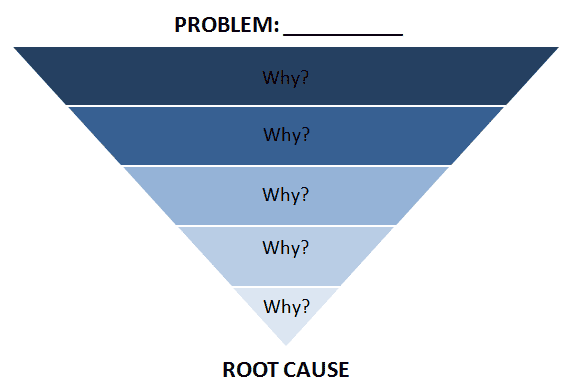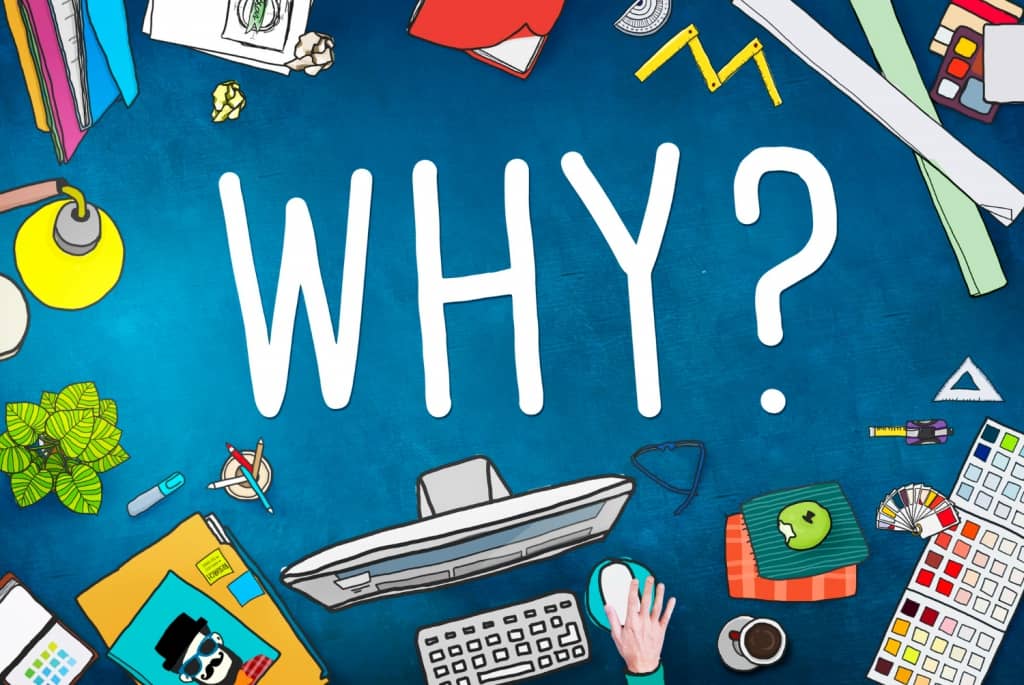![]() Mena kei te raru tonu to roopu e ngenge ana koe ki te whakatika tonu, kua tae ki te wa ki te keri hohonu kia kitea te take. I reira ka kuhu mai te huarahi e rima He aha blog pou, ka tirotirohia me pehea te whakangawari i nga uauatanga whakahaere ma te patai "he aha" e rima nga wa.
Mena kei te raru tonu to roopu e ngenge ana koe ki te whakatika tonu, kua tae ki te wa ki te keri hohonu kia kitea te take. I reira ka kuhu mai te huarahi e rima He aha blog pou, ka tirotirohia me pehea te whakangawari i nga uauatanga whakahaere ma te patai "he aha" e rima nga wa.
 Tuhinga o nga mea
Tuhinga o nga mea
 He aha te tikanga e rima nga take?
He aha te tikanga e rima nga take? Nga Painga o nga Take e rima
Nga Painga o nga Take e rima Me pehea te tono mo nga take e rima
Me pehea te tono mo nga take e rima Te Tauira He aha e rima
Te Tauira He aha e rima He Tohutohu Mo te Tono Angitu e rima He aha te tono
He Tohutohu Mo te Tono Angitu e rima He aha te tono  Nga Takea Matua
Nga Takea Matua FAQs
FAQs
 He aha te tikanga e rima nga take?
He aha te tikanga e rima nga take?

 Whakaahua: CX haerenga
Whakaahua: CX haerenga![]() Ko te huarahi e rima nga take he tikanga whakaoti rapanga e keri hohonu ana ki te hura i te putake o nga take i roto i nga whakahaere. Ko te patai "he aha" e rima nga wa, ka tihorea nga papa o te rapanga kia kitea ai ona take.
Ko te huarahi e rima nga take he tikanga whakaoti rapanga e keri hohonu ana ki te hura i te putake o nga take i roto i nga whakahaere. Ko te patai "he aha" e rima nga wa, ka tihorea nga papa o te rapanga kia kitea ai ona take.
![]() Ko tenei tikanga, e mohiotia ana ko te huarahi 5 Whys, 5 Why ranei, kei tua atu i nga otinga taumata-mata, e whakatairanga ana i te tino tātaritanga o nga raru. I te nuinga o te wa ka whakamahia i roto i nga mahi whakaoti rapanga me nga mahi whakatau, ko te huarahi e rima nga take ka awhina i nga whakahaere ki te whakahaere a f
Ko tenei tikanga, e mohiotia ana ko te huarahi 5 Whys, 5 Why ranei, kei tua atu i nga otinga taumata-mata, e whakatairanga ana i te tino tātaritanga o nga raru. I te nuinga o te wa ka whakamahia i roto i nga mahi whakaoti rapanga me nga mahi whakatau, ko te huarahi e rima nga take ka awhina i nga whakahaere ki te whakahaere a f![]() ive-he aha te tātaritanga, te tautuhi i nga takenga pono o nga wero ki te whakatinana i nga otinga whai hua ake, toimau hoki.
ive-he aha te tātaritanga, te tautuhi i nga takenga pono o nga wero ki te whakatinana i nga otinga whai hua ake, toimau hoki.
 Nga Painga O Nga Take E rima
Nga Painga O Nga Take E rima
![]() Ko te huarahi e rima nga take he maha nga painga, na te mea he tikanga whai hua mo nga whakahaere e rapu ana i te whakaoti rapanga me te tātari take pakiaka. Anei etahi painga nui o te tikanga 5 Whys:
Ko te huarahi e rima nga take he maha nga painga, na te mea he tikanga whai hua mo nga whakahaere e rapu ana i te whakaoti rapanga me te tātari take pakiaka. Anei etahi painga nui o te tikanga 5 Whys:
 1/ Tautuhinga Putake Roohu:
1/ Tautuhinga Putake Roohu:
![]() Ko te tikanga e rima nga take he pai ki te hura i nga take matua o te raru. Ma te patai "he aha," ka akiakihia he whakamatautau tino, ka awhina i nga whakahaere ki te neke ki tua atu o nga tohu tohu-mata ki te tautuhi i nga take matua.
Ko te tikanga e rima nga take he pai ki te hura i nga take matua o te raru. Ma te patai "he aha," ka akiakihia he whakamatautau tino, ka awhina i nga whakahaere ki te neke ki tua atu o nga tohu tohu-mata ki te tautuhi i nga take matua.
 2/ Te ngawari me te urunga:
2/ Te ngawari me te urunga:
![]() Ko te ngawari o te huarahi e rima nga take ka taea e nga roopu o nga reanga katoa o te whakahaere. Kaore he whakangungu motuhake, he taputapu uaua ranei e hiahiatia ana, ka waiho hei huarahi whaihua me te ngawari mo te whakaoti rapanga.
Ko te ngawari o te huarahi e rima nga take ka taea e nga roopu o nga reanga katoa o te whakahaere. Kaore he whakangungu motuhake, he taputapu uaua ranei e hiahiatia ana, ka waiho hei huarahi whaihua me te ngawari mo te whakaoti rapanga.
 3/ Utu-Whakatika:
3/ Utu-Whakatika:
![]() Ko te whakatinana i te tikanga Rima Whys he utu-utu ka whakaritea ki etahi atu tikanga whakaoti rapanga. He iti rawa nga rauemi e hiahiatia ana, ka taea te whakahaere ma te ngawari noa, ka waiho hei whiringa pai mo nga whakahaere iti te putea.
Ko te whakatinana i te tikanga Rima Whys he utu-utu ka whakaritea ki etahi atu tikanga whakaoti rapanga. He iti rawa nga rauemi e hiahiatia ana, ka taea te whakahaere ma te ngawari noa, ka waiho hei whiringa pai mo nga whakahaere iti te putea.
 4/ Whakanuia te Whakawhitiwhiti:
4/ Whakanuia te Whakawhitiwhiti:
![]() Ko te tikanga o te patai "he aha" nga wa maha e akiaki ana i nga korero tuwhera i roto i nga roopu. Ka whakatairanga i te mahi tahi me te maaramatanga tahi ki te raruraru, te whakatairanga i te taiao mahi marama ake, me te whakawhitiwhiti korero.
Ko te tikanga o te patai "he aha" nga wa maha e akiaki ana i nga korero tuwhera i roto i nga roopu. Ka whakatairanga i te mahi tahi me te maaramatanga tahi ki te raruraru, te whakatairanga i te taiao mahi marama ake, me te whakawhitiwhiti korero.
 5/ Aukati i te Hohoutanga:
5/ Aukati i te Hohoutanga:
![]() Ma te whakatika i nga take o te raru, ka awhina te tikanga Rima Whys i nga whakahaere ki te hanga otinga hei aukati i te take kia kore e hoki mai ano. Ka whai waahi tenei huarahi ki te whakaoti rapanga mo te wa roa, me te whakanui i te pai o te whakahaere.
Ma te whakatika i nga take o te raru, ka awhina te tikanga Rima Whys i nga whakahaere ki te hanga otinga hei aukati i te take kia kore e hoki mai ano. Ka whai waahi tenei huarahi ki te whakaoti rapanga mo te wa roa, me te whakanui i te pai o te whakahaere.
![]() Ko te huarahi e rima nga take, ko te tikanga 5 Whys ranei mo te tātari take pakiaka, e tu ana mo tona ngawari, te utu-whai hua, me te kaha ki te tautuhi i nga take hohonu, ka waiho hei taputapu whai hua mo nga whakahaere e whakapau kaha ana ki te whakapai tonu me te whakaoti rapanga.
Ko te huarahi e rima nga take, ko te tikanga 5 Whys ranei mo te tātari take pakiaka, e tu ana mo tona ngawari, te utu-whai hua, me te kaha ki te tautuhi i nga take hohonu, ka waiho hei taputapu whai hua mo nga whakahaere e whakapau kaha ana ki te whakapai tonu me te whakaoti rapanga.

 Whakaahua: freepik
Whakaahua: freepik Me pehea te tono mo nga take e rima
Me pehea te tono mo nga take e rima
![]() Anei he aratohu taahiraa-i-taahiraa mo te whakamahi i te huarahi e rima He aha:
Anei he aratohu taahiraa-i-taahiraa mo te whakamahi i te huarahi e rima He aha:
 1/ Tautuhia te Raruraru:
1/ Tautuhia te Raruraru:
![]() Me timata ma te whakamarama i te raru e hiahia ana koe ki te whakatika. Me whakarite he mea motuhake te raruraru me te tino mohio ki nga tangata katoa e whai waahi ana.
Me timata ma te whakamarama i te raru e hiahia ana koe ki te whakatika. Me whakarite he mea motuhake te raruraru me te tino mohio ki nga tangata katoa e whai waahi ana.
 2/ Hangaia te patai tuatahi "He aha":
2/ Hangaia te patai tuatahi "He aha":
![]() Uia mai he aha i puta ai te raruraru. Akiakihia nga mema o te roopu ki te tuku whakautu e torotoro ana i nga take o te raru. Ko tenei ka timata i te tukanga whakatewhatewha.
Uia mai he aha i puta ai te raruraru. Akiakihia nga mema o te roopu ki te tuku whakautu e torotoro ana i nga take o te raru. Ko tenei ka timata i te tukanga whakatewhatewha.
 3/ Whakahokia mo ia Whakautu:
3/ Whakahokia mo ia Whakautu:
![]() Mo ia whakautu ki te patai tuatahi "he aha", patai ano "he aha". Me haere tonu tenei tukanga, e rima nga wa, kia tae ra ano koe ki te waahi ka puta nga whakautu ki tetahi take matua. Ko te mea nui ko te haere ki tua atu i nga whakamaramatanga taumata-mata.
Mo ia whakautu ki te patai tuatahi "he aha", patai ano "he aha". Me haere tonu tenei tukanga, e rima nga wa, kia tae ra ano koe ki te waahi ka puta nga whakautu ki tetahi take matua. Ko te mea nui ko te haere ki tua atu i nga whakamaramatanga taumata-mata.
 4/ Tātarihia te Take Putake:
4/ Tātarihia te Take Putake:
![]() Ina patai koe "he aha" e rima nga wa, kua kitea ranei he take e pa ana ki te roopu, tirohia kia mohio ko te take tino nui. I etahi wa, ka hiahiatia etahi atu tirotirohanga, whakamanatanga ranei.
Ina patai koe "he aha" e rima nga wa, kua kitea ranei he take e pa ana ki te roopu, tirohia kia mohio ko te take tino nui. I etahi wa, ka hiahiatia etahi atu tirotirohanga, whakamanatanga ranei.
 5/ Whakawhanake Rongoa:
5/ Whakawhanake Rongoa:
![]() I te mea kua tautuhia te take o te take, te whakaaroaro me te whakatinana i nga otinga e whakatika tika ana. Ko enei otinga me whai ki te whakakore, ki te whakaiti ranei i te take pakiaka, kia kore ai e hoki mai te raru.
I te mea kua tautuhia te take o te take, te whakaaroaro me te whakatinana i nga otinga e whakatika tika ana. Ko enei otinga me whai ki te whakakore, ki te whakaiti ranei i te take pakiaka, kia kore ai e hoki mai te raru.
 6/ Aroturuki me te Aromātai:
6/ Aroturuki me te Aromātai:
![]() Kia mahia a tatou otinga me te aro turuki i o raatau paanga i te wa e haere ana. Aromātai mehemea kua whakatauhia te raruraru me te mea e tika ana etahi whakatikatika ki nga otinga.
Kia mahia a tatou otinga me te aro turuki i o raatau paanga i te wa e haere ana. Aromātai mehemea kua whakatauhia te raruraru me te mea e tika ana etahi whakatikatika ki nga otinga.

 Whakaahua: freepik
Whakaahua: freepik Te Tauira He aha e rima
Te Tauira He aha e rima
![]() Me hikoi tatou i tetahi tauira ngawari o te huarahi e rima nga take hei whakaatu i te mahi. Whakaarohia he ahuatanga kei te anga atu to roopu hokohoko ki tetahi take: Kua Whakahekea te Tukutuku Paetukutuku
Me hikoi tatou i tetahi tauira ngawari o te huarahi e rima nga take hei whakaatu i te mahi. Whakaarohia he ahuatanga kei te anga atu to roopu hokohoko ki tetahi take: Kua Whakahekea te Tukutuku Paetukutuku
![]() Tauākī Raruraru: Kua Whakahekea te Whakawhitinga Paetukutuku
Tauākī Raruraru: Kua Whakahekea te Whakawhitinga Paetukutuku
![]() 1. He aha i heke iho ai te hokohoko paetukutuku?
1. He aha i heke iho ai te hokohoko paetukutuku?
 Whakautu: I tino piki ake te utu utu.
Whakautu: I tino piki ake te utu utu.
![]() 2. He aha te take i piki ake ai te reeti tāwhana?
2. He aha te take i piki ake ai te reeti tāwhana?
 Whakautu: I kitea e nga manuhiri he koretake te ihirangi paetukutuku.
Whakautu: I kitea e nga manuhiri he koretake te ihirangi paetukutuku.
![]() 3. He aha te take i kitea ai e nga manuhiri he mea koretake?
3. He aha te take i kitea ai e nga manuhiri he mea koretake?
 Whakautu: Karekau nga korero i rite ki nga hiahia o naianei me nga hiahia o te hunga whakarongo.
Whakautu: Karekau nga korero i rite ki nga hiahia o naianei me nga hiahia o te hunga whakarongo.
![]() 4. He aha te take i kore ai e rite nga korero ki nga hiahia me nga hiahia o te hunga whakarongo?
4. He aha te take i kore ai e rite nga korero ki nga hiahia me nga hiahia o te hunga whakarongo?
 Whakautu: Kaore te roopu hokohoko i whakahaere rangahau maakete hou kia mohio ai koe ki nga hiahia a nga kaihoko.
Whakautu: Kaore te roopu hokohoko i whakahaere rangahau maakete hou kia mohio ai koe ki nga hiahia a nga kaihoko.
![]() 5. He aha te take i kore ai te roopu hokohoko i whakahaere rangahau maakete tata nei?
5. He aha te take i kore ai te roopu hokohoko i whakahaere rangahau maakete tata nei?
 Whakautu: He iti nga rauemi me nga herenga wa i aukati i te kaha o te roopu ki te whakahaere rangahau maakete auau.
Whakautu: He iti nga rauemi me nga herenga wa i aukati i te kaha o te roopu ki te whakahaere rangahau maakete auau.
![]() Putake Take:
Putake Take: ![]() Ko te take o te hekenga o te hokohoko paetukutuku ka tohua he iti rawa nga rauemi me nga here wa e kore ai te roopu hokohoko e whakahaere rangahau maakete i ia wa.
Ko te take o te hekenga o te hokohoko paetukutuku ka tohua he iti rawa nga rauemi me nga here wa e kore ai te roopu hokohoko e whakahaere rangahau maakete i ia wa.
![]() Rongoā:
Rongoā:![]() Whakaritea nga rauemi whakatapua mo te rangahau maakete i ia wa kia pai ai nga korero ki nga hiahia me nga hiahia o te hunga whakarongo.
Whakaritea nga rauemi whakatapua mo te rangahau maakete i ia wa kia pai ai nga korero ki nga hiahia me nga hiahia o te hunga whakarongo.
![]() I tenei tauira hokohoko:
I tenei tauira hokohoko:
 Ko te raru tuatahi ko te hekenga o te hokohoko paetukutuku.
Ko te raru tuatahi ko te hekenga o te hokohoko paetukutuku. Na roto i te patai "he aha" e rima nga wa, i tautuhia e te roopu te take: he iti nga rauemi me nga here wa e aukati ana i nga rangahau maakete auau.
Na roto i te patai "he aha" e rima nga wa, i tautuhia e te roopu te take: he iti nga rauemi me nga here wa e aukati ana i nga rangahau maakete auau. Ko te otinga ko te whakatika i te take matua ma te tohatoha rauemi motuhake mo te rangahau maakete auau kia pai ake ai te whakahāngai i nga ihirangi ki nga hiahia o te hunga whakarongo.
Ko te otinga ko te whakatika i te take matua ma te tohatoha rauemi motuhake mo te rangahau maakete auau kia pai ake ai te whakahāngai i nga ihirangi ki nga hiahia o te hunga whakarongo.
 He Tohutohu Mo te Tono Angitu e rima He aha te tono
He Tohutohu Mo te Tono Angitu e rima He aha te tono
 Whakauruhia he Rōpū Whakawhiti Mahi:
Whakauruhia he Rōpū Whakawhiti Mahi:  Kohikohia nga tangata takitahi mai i nga tari rereke, i nga mahi ranei kia whiwhi tirohanga rereke mo te raru.
Kohikohia nga tangata takitahi mai i nga tari rereke, i nga mahi ranei kia whiwhi tirohanga rereke mo te raru. Whakahauhia te Whakawhitiwhiti Tuwhera:
Whakahauhia te Whakawhitiwhiti Tuwhera:  Hangaia he waahi haumaru mo nga mema o te roopu ki te whakapuaki i o raatau whakaaro me te kore e mataku ki te whakahee. Whakanuia te ahua mahi tahi o te tukanga.
Hangaia he waahi haumaru mo nga mema o te roopu ki te whakapuaki i o raatau whakaaro me te kore e mataku ki te whakahee. Whakanuia te ahua mahi tahi o te tukanga. Tuhia te Tukanga:
Tuhia te Tukanga:  Kia mau ki te rekoata o te tātaritanga o nga take e rima, tae atu ki nga paatai i pataia me nga whakautu ka tukuna. Ka whai hua enei tuhinga hei tohutoro me te ako a meake nei.
Kia mau ki te rekoata o te tātaritanga o nga take e rima, tae atu ki nga paatai i pataia me nga whakautu ka tukuna. Ka whai hua enei tuhinga hei tohutoro me te ako a meake nei. Urutau ki te hiahia:
Urutau ki te hiahia:  Kia ngawari ki te whakamahi i nga take e rima. Mena ka tautuhia e te roopu te take i mua i te patai "he aha" e rima nga wa, kaore he take ki te akiaki i etahi atu patai.
Kia ngawari ki te whakamahi i nga take e rima. Mena ka tautuhia e te roopu te take i mua i te patai "he aha" e rima nga wa, kaore he take ki te akiaki i etahi atu patai.

 Whakaahua: freepik
Whakaahua: freepik Nga Takea Matua
Nga Takea Matua
![]() I roto i te haerenga ki te whakaoti rapanga, ka puta mai te huarahi e rima nga take hei rama, hei arahi i nga whakahaere ki te ngakau o o ratou wero. Ma te patai "he aha," ka taea e nga kapa te tihore i nga papa o nga take papapapa, ka hurahia nga take pakiaka e hiahia ana kia aro.
I roto i te haerenga ki te whakaoti rapanga, ka puta mai te huarahi e rima nga take hei rama, hei arahi i nga whakahaere ki te ngakau o o ratou wero. Ma te patai "he aha," ka taea e nga kapa te tihore i nga papa o nga take papapapa, ka hurahia nga take pakiaka e hiahia ana kia aro.
![]() Hei whakarei ake i te whakamahinga o te huarahi e rima Whys, ma te whakamahi
Hei whakarei ake i te whakamahinga o te huarahi e rima Whys, ma te whakamahi ![]() Nga Kiriata
Nga Kiriata![]() . Ka taea e tenei taputapu whakaaturanga tauwhitiwhiti te whakamaarama i te waahanga mahi tahi o te mahi, ka taea e nga roopu te wetewete i nga raru me te whai waahi ki te huarahi rapu otinga. Ko te AhaSlides e whakahaere ana i te taunekeneke-a-waa, ka waiho te tātaritanga e rima nga take he wheako hihiri me te whai waahi mo nga roopu.
. Ka taea e tenei taputapu whakaaturanga tauwhitiwhiti te whakamaarama i te waahanga mahi tahi o te mahi, ka taea e nga roopu te wetewete i nga raru me te whai waahi ki te huarahi rapu otinga. Ko te AhaSlides e whakahaere ana i te taunekeneke-a-waa, ka waiho te tātaritanga e rima nga take he wheako hihiri me te whai waahi mo nga roopu.
 FAQs
FAQs
 He aha te tikanga 5 Whys?
He aha te tikanga 5 Whys?
![]() Ko te huarahi e rima nga take he tikanga whakaoti rapanga e keri hohonu ana ki te hura i te putake o nga take i roto i nga whakahaere. Ko te patai "he aha" e rima nga wa, ka tihorea nga papa o te rapanga kia kitea ai ona take.
Ko te huarahi e rima nga take he tikanga whakaoti rapanga e keri hohonu ana ki te hura i te putake o nga take i roto i nga whakahaere. Ko te patai "he aha" e rima nga wa, ka tihorea nga papa o te rapanga kia kitea ai ona take.
 He aha te ariā o te 5 He aha?
He aha te ariā o te 5 He aha?
![]() Ko te ariā o te 5 Whys i ahu mai i te whakaaro ma te patai "he aha," ka taea e te tangata te hura i nga paparanga hohonu ake o te take, ka haere ki tua atu i nga tohu o te taumata-mata ki te tautuhi i te tino take o te raru.
Ko te ariā o te 5 Whys i ahu mai i te whakaaro ma te patai "he aha," ka taea e te tangata te hura i nga paparanga hohonu ake o te take, ka haere ki tua atu i nga tohu o te taumata-mata ki te tautuhi i te tino take o te raru.
 He aha te rautaki whakaako 5 He aha?
He aha te rautaki whakaako 5 He aha?
![]() Ko te rautaki whakaako 5 Whys ko te whakamahi i te tikanga 5 Whys hei taputapu matauranga. Ka awhina i nga akonga ki te wetewete i nga take ma te patai i nga paatai "he aha" kia mohio ai koe ki te take o te take.
Ko te rautaki whakaako 5 Whys ko te whakamahi i te tikanga 5 Whys hei taputapu matauranga. Ka awhina i nga akonga ki te wetewete i nga take ma te patai i nga paatai "he aha" kia mohio ai koe ki te take o te take.
![]() Whakautu:
Whakautu: ![]() Mahere Pakihi |
Mahere Pakihi | ![]() Taputapu Hinengaro
Taputapu Hinengaro








